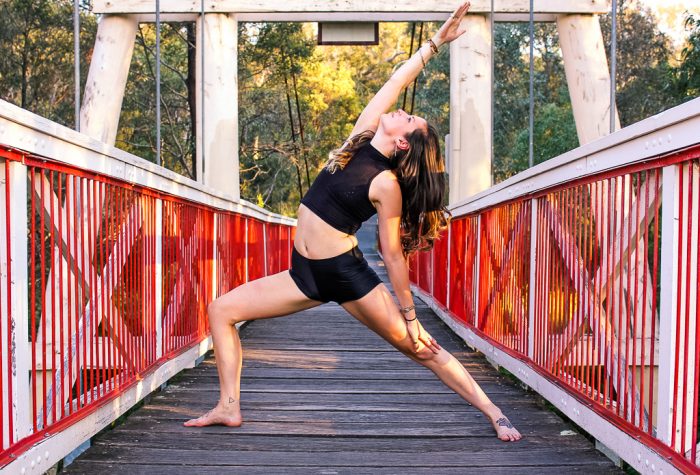Vinyasa vs. Yin
If you’re new to yoga, or only been doing it for a short amount of time, the language used to describe styles of yoga can become overwhelming and confusing. Even when you go to google these terms, there’s never really a straight forward answer as to what to expect. You just want to do, “yoga”, right? Well, when signing up to a practice it’s nice to know what you’re in for and which practice is going to suit your body best.
Lineage
Yoga, traditionally, comes from India and is part of the Hindu tradition. It has been thought to date back to 3000 BCE and has changed and come a long way since then. When yoga travelled over to the western world, it changed from primarily seated postures with emphasis on meditation and breath, to a more physical practice that we associate with yoga today.
Vinyasa yoga was developed from the Ashtanga practice. A “vinyasa” is a short sequence of movements from plank position, bending the elbows to chaturunga the body towards the earth, then lifting the chest to a backbend, and returning to downward dog. In the Ashtanga practice, this vinyasa is done between each seated posture.
Vinyasa as a style of yoga was created as a dynamic practice with there being a link between each posture.
Yin yoga, unlike the traditional Hatha or Ashtanga yoga, comes from a Chinese philosophy. Longer holds in positions was known to increase flexibility in martial arts students and activate the meridian lines of the body. It was first known as Taoist Yoga before it became yin yoga.
Definition
Vinyasa, as mentioned above, is a flowing practice that transitions from one posture to the next is a way a dancer might move through a dance. There is less static holds in Vinyasa and it a more aerobic practice. The practice may include some meditation, however the emphasis in Vinyasa is on movement. It is like the practice will become a moving mediation. There is also a practice of breath within the movement; that as you flow from one position to the next, the breath stays consistent and steady through the nose.
Yin is the opposite of Vinyasa. Yin energy is the opposite to Yang energy. If vinyasa is all about aerobic movement, yin is stillness and softness. There is usually more meditation and pranayama (breath exercises) during your practice.
What to expect in your practice:
During your Vinyasa practice, dependent on the teacher, there will be lots of movements and dynamic flows and poses. The class structure will usually involve gentle movements to warm the muscles and joints up, then perhaps a few Surya Namaskar’s (sun salutes) to bring the body to a flowing rhythm. The practice may progress then to unique flows from one pose to the next. Each Vinyasa teacher will have their own unique style and flow of poses.
An example of a small flow might be from Downward dog, to lift the right leg to three legged dog, stepping the right foot between the hands and lifting the arms up to a high lunge position. Then turning the left heel down to the earth, face the body to the long edge of the mat and open the arms out to shoulder hight for warrior two. Flip the front palm and then left the right arm up and the left arm down the left leg for reverse warrior.
Next, windmill both hands to the earth to frame the right foot and step back the right foot to the back of the mat, next to the left for plant pose. Bend the elbows for chaturanga, lift the heart to backbend and then return to downward dog.
All of this to be linked to breath as well. A good rule of thumb with breath is the if you are opening your front body, the breath is an inhale, and if you’re moving towards the earth or in any kind of forward folding position, the breath is an exhale.
During your Yin practice, be ready to relax and go inwards. A lot of people typically think of yin as being an “easy” practice. And in some ways it is as it’s not an aerobic response in the body. However, don’t underestimate the mental strength called for during a yin practice. In the modern world we exist in today, it is encouraged to be constantly moving and strengthening. Yin is a practice in stillness and letting go of the need to move and do.
Almost all of the poses you’ll be doing are either seated or laying down. The use of props is also very common for a yin practice. The aim of a Yin practice is for the body to completely relax. Using props aids this as is supports the muscles to they don’t have to tense in a pose.
Each pose is held for several minutes in silence or with soft music in the background. This can be a challenge. When our bodies stop, our minds start to distract ourselves with the urges to move, adjust, itch or anything else. Try your best to stay in stillness the whole time. Of course, if your body is received signs of numbness or pain, you can always readjust or leave the pose early. This is still yoga and we’re always listening to our bodies and what they need.
Benefits
Depending on your body type, experience in other sports or physical activities and many other factors, you may benefit more from one practice than the other.
As mentioned, Vinyasa encourages the body to get moving around. It loosens muscles and joints whilst at the same time, builds strength in the body. During in a Vinyasa practice, the teacher may structure the flow around a “peak pose”. This is usually a pose that is slightly more advanced and works on a certain body part particularly. There will always be modifications and different options offered in a practice that will allow your body to flow. Just remember that we all look, feel and see differently. You do not have to look like anyone else in the practice. The person next to you may have been practicing yoga for two minutes or twenty years. Remind yourself to approach each practice with compassion, both for yourself and your fellow yogis.
A gentle Vinyasa class can also be good for weight loss and injury rehabilitation. If working with an injury, be sure to let your teacher know so that they are able to instruct you correctly. The use of props can also be used in Vinyasa, but not as must in Yin. Props in Vinyasa are usually a strap or a block with allow students to either aid a pose, or deepen it further.
In a yin practice, think of it like a massage for your insides. As mentioned before, Yin works to stimulate meridian lines through the body. These are energy lines which run through the body and are connected with different organs. When our meridian lines are unblocked, it is believed that Qi (energy) is able to move more freely throughout the body. Yin yoga aims to release fascia tissue – this is connective tissue that sits between our organs, bones, muscles and tendons. A yin practice stimulates deeper within the body than just the muscles.
Yin is a beautiful practice to calm down the mind and body. It is great if you have a very active life with lots of movement and require a bit of stillness to centre back to yourself. If you have severe injury, yin yoga can be a wonderful way to step onto the mat and safely into your practice.
Sometimes during your Yin yoga practice, the teacher may give “dharma talks” which are short monologues about the origins, benefits or anatomy of the pose that you are in and the meridian lines activated. They can also consist of buddhist stories or reflections of their own experiences, some even read poetry to students.
Try it all!
If you’re just starting out as a yogi, I hope this has helped you find what might suit you best at this time. Please remember to always balance yourself as well. Do different classes with different teachers and see how it feels. If you do one Vinyasa practice with a teacher, try a different Vinyasa class with a different teacher. What’s beautiful about yoga is the connection that we form to our bodies and the teachers that guide us.
At Omflow, we pride ourselves on the connections we are able to provide between each student and teacher. We all have something unique and special about us that we bring to the mat which we would love to share with you.
To sign up to any of our classes, visit our website and find what suits your timezone, budget, level and style. We’re thrilled to see you when you next step onto your mat.
“For me, Yoga is being able to set yourself up and feel strong enough in body, in spirit, in mind, in breath so you can stay in a state of peace no matter what is thrown at you.” – Vanessa
Take a Yoga Practice with Vanessa: SIGN ME UP!







Read 0 comments and reply